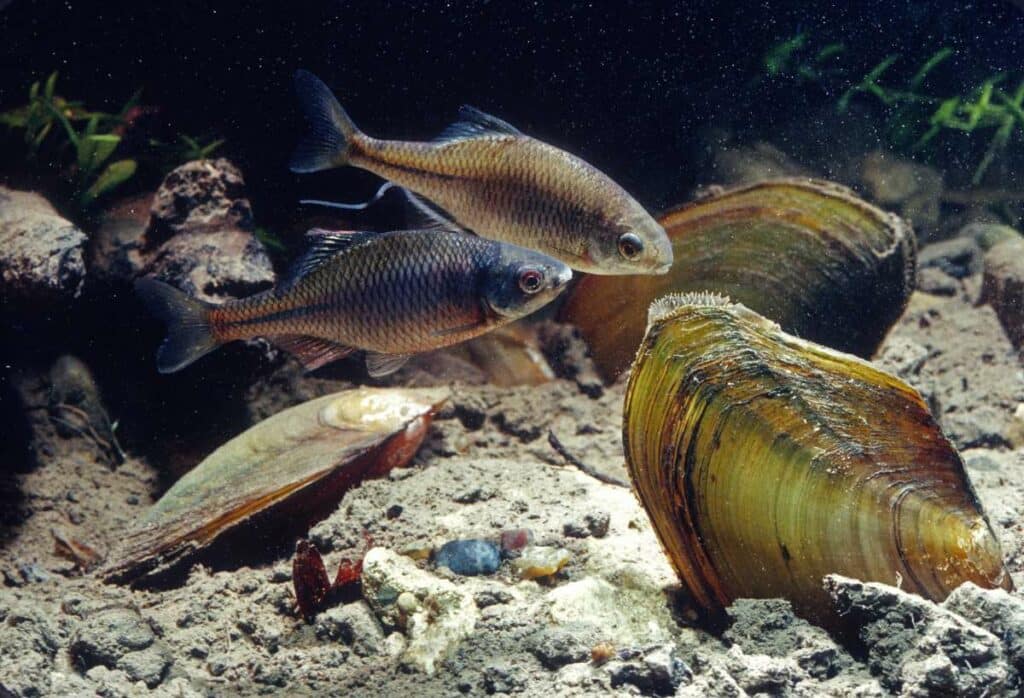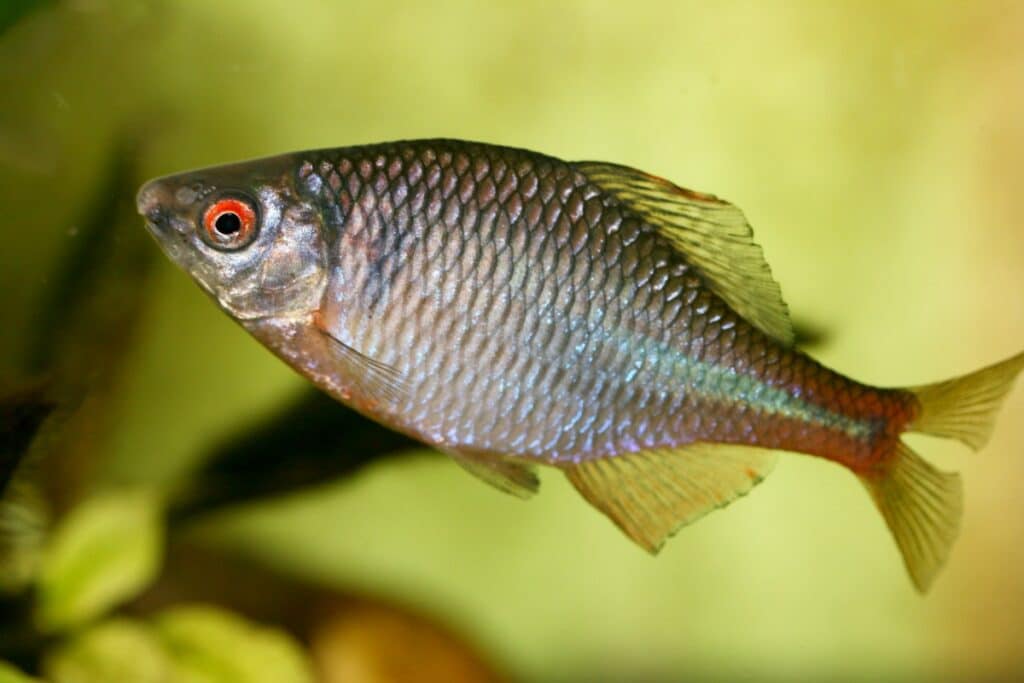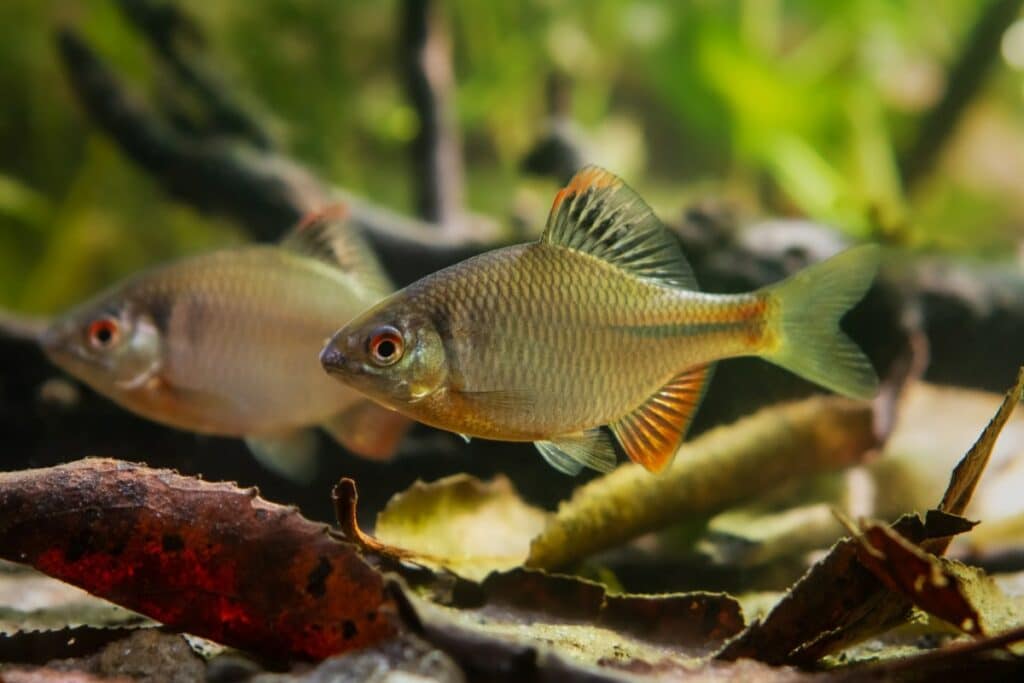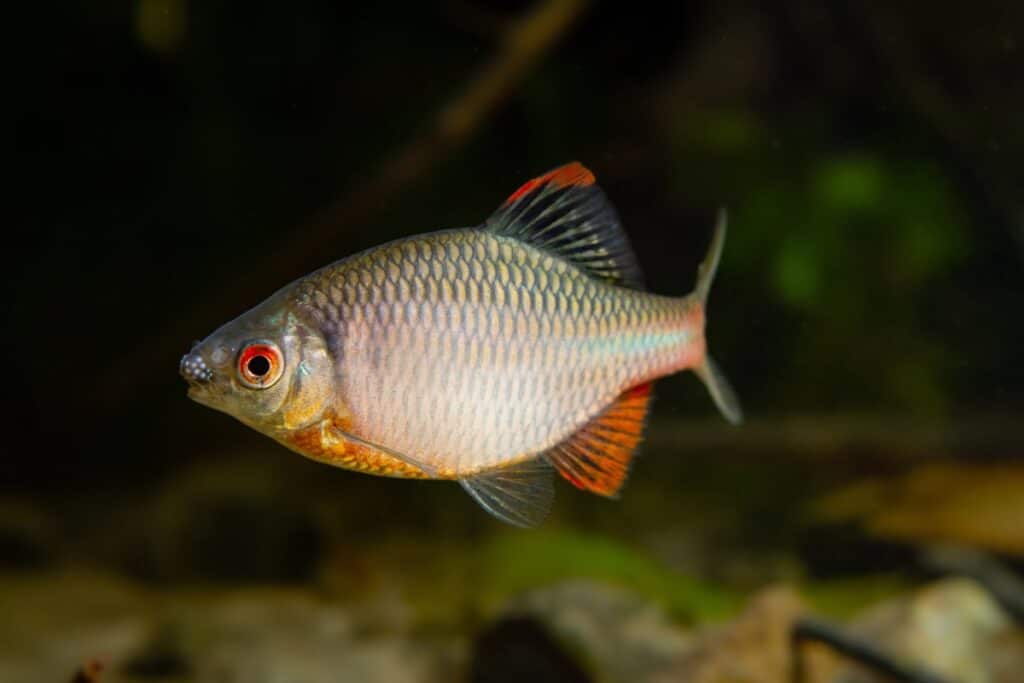the essentials in brief
The relationship between the bitterling and the pond mussel is special, as the bitterling lays its eggs in the mussel where they can mature protected from predators. Learn more here.
The bitterling fulfills an important ecological role as it is part of the food web and serves as prey for other predatory fish and waterfowl. It also serves as an indicator of good water quality. Read more here.
As an individual, you can raise awareness about the bitterling and its conservation, support conservation organizations and act in an environmentally responsible manner to reduce pollution of water bodies. More here.
The bitterling is a very interesting contemporary if you are a nature lover and love to immerse yourself in the mysterious world of animal and plant species? In this article we will give you the fascinating way of life, the ecological importance and the protection of this extraordinary fish bring closer.
A tiny resident of ponds and rivers

The bitterling is a small one freshwater fish, mainly located in Europe. He inhabits rtranquil ponds, rivers and lakes with clear, clean water, since it depends on intact water quality.
Its name derives from its slightly bitter taste, which, however, is not noticeable to humans. With an average Length from 5 to 7 cm the bitterling is one of the small fish species. But despite his size, he has a big role in the aquatic ecosystems.
Tip: If you want to experience the fascinating bitterling and its unique relationship with the pond mussel up close, I recommend taking a field trip to a protected pond or river in its natural environment. Many nature reserves offer guided tours where you have the opportunity to watch the bitterlings displaying their courtship behavior and laying their eggs. However, make sure that you respect the environment and do not cause any disturbances so as not to endanger the delicate ecosystems.
An unusual relationship
What makes the bitterling particularly fascinating is its unique relationship with another aquatic creature: the pond mussel (Anodonta anatina). The pond shell has one special incubator, in which the bitterling lays its eggs. But that's not all!
The Bitterling is unable to lay its eggs in the shell on its own. This is where an amazing adaptation comes into play: the female has a longer oviposition tube than the male. During the spawning season, the female signals her readiness by presenting herself in front of the mussel. The male takes this opportunity to deposit his sperm into the female's oviposition tube. This will make the Transfer the bitterling eggs directly into the clam, where they can mature protected from predators.
Note: If you decide to keep bitterlings in an aquarium, know that caring for these creatures is a responsibility. Find out about the specific needs of the fish species and make sure you have the right equipment and care for the aquarium. You should also make sure that you only purchase bitterlings from reputable breeders to avoid illegal wild capture.
A short but intense love affair
The relationship between the bitterling and the pond mussel is short-lived but intense. The spawning season of the bitterling extends from about April to July, with the exact months depending on geographic location. Mating and oviposition take place during this time.
The bitterlings show up during this phase fascinating courtship behavior, in which the males try to attract the attention of the females. The eggs remain in the shell until the young fish hatch and make their first attempts at swimming.
Attention: If you are keeping bitterlings in an aquarium, it is of the utmost importance never to release them into the wild. Introduced species can pose a threat to the fauna and flora in native waters. If you decide to stop keeping bitterlings, consult a responsible aquarist or conservation organization who may be able to accommodate them.
Ecological significance and endangerment of the bitterling

The bitterling fulfills one in its habitat important ecological role. As part of the food web, it serves larger predatory fish and waterfowl than prey. At the same time, the bitterling is also a Water health indicator. Its presence indicates good water quality as it is sensitive to pollution.
Unfortunately, like many other animal species, the bitterling is also affected by the threatened with loss and pollution of its habitats. The construction of dams, the straightening of rivers and the pollution of water bodies bother him. In order to preserve the bitterling and its unique relationship system, it is important Measures to protect and revitalize habitats to take.
Additional information: If you are interested in aquaristics but don't want to keep bitterlings, there are numerous other fascinating fish species to consider. Gouramis, neon tetras, butterfly cichlids or shrimps are just a few examples of the diverse possibilities in aquaristics. Before you decide on a certain species, inform yourself thoroughly about their housing and care requirements in order to enable them to lead a species-appropriate life.
What can you do to protect the bitterling?
While it may seem like there's not much you can do as an individual to protect the bitterling, you certainly can Post afford:
- Promote environmental awareness: Inform yourself and others about the bitterling and the importance of an intact water habitat. The more people are committed to protection, the greater the chance that policymakers will act.
- Support conservation organizations: There are numerous organizations that work to protect water bodies and endangered species. Support them with donations or volunteer work.
- Reconsider your actions: Watch your own water consumption and make an effort to reduce the pollution of water bodies.
conservation organization
A conservation organization is a non-profit organization dedicated to the protection and conservation of natural habitats and species of animals and plants. They work to minimize human impact on the environment, protect endangered species and preserve habitats. Conservation organizations are often involved in research, education, and practical conservation projects.
The History of Bitterling Research
The discovery and study of the bitterling has a fascinating history. Already in 18. century first records were made of this special fish species. Scientists were already impressed by the Symbiosis between the bitterling and the pond mussel, but have not yet been able to fully decipher the exact mechanisms behind this relationship.
Only in the course of 20. century Intensive studies have been undertaken to explore the behavior and reproduction of the bitterling. Modern technologies such as underwater cameras made it possible to observe courtship behavior and egg laying in the ponds and rivers. The results of this research not only contributed to the understanding of the bitterling-pork mussel symbiosis, but also to the general understanding of ecology and behavioral biology of fish species.
No products found.
The bitterling in art and culture
The bitterling has not only attracted the attention of scientists, but also inspired artists and cultural workers. In traditional Japanese art, like Ukiyo-e print, the bitterling was often depicted in idyllic landscapes. The bitterling also finds its place in contemporary art and is Symbol of the fragility of nature and the beauty of connection with other living beings interpreted.
In addition, the bitterling has found its way into the literature and folklore found. In some ancient tales, the bitterling is described as a fish that eats the Collects tears from lovers and thereby strengthens love. Such legends give the bitterling a mystical meaning and make it a culturally relevant creature.
Bitterlings as pets in aquariums

Because of your small size and their interesting reproductive behavior are bitterlings also with aquarists popular. In well-maintained aquariums, they can breed when conditions are similar to their natural environment. Keeping bitterlings in aquariums can be one way to do that Awareness of the protection of the species and its habitats to strengthen. However, it is important to ensure that bitterlings are only purchased from reputable breeders to avoid endangering wild populations.
If you choose to keep bitterlings in an aquarium, you need to ensure that the Water quality is optimal and there are enough plants are to provide natural hiding places for the fish. It is also advisable to use aquarium plants from the region where the bitterling is originally native to create an authentic miniature ecosystem.
A real all-rounder
The bitterling is undoubtedly a remarkable fish that is not only due to its outer appearance, but above all by his fascinating relationship with the pond mussel impressed. Its history of discovery, cultural significance, and the ability to keep bitterlings in aquariums make it a versatile subject that appeals to scientists, nature lovers, and art lovers alike.

